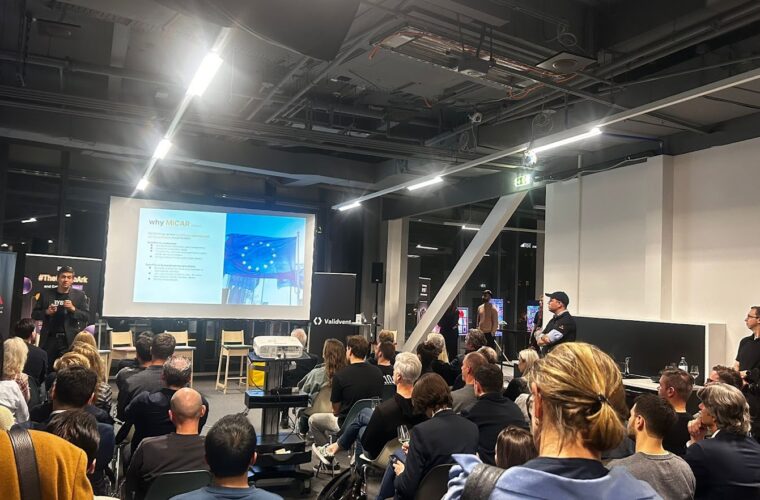Microsavings: There are many payment service providers and payment technologies available in the market. However, there is still an integration problem that large companies face when looking to leverage any payment services. Imburse’s mission is to simplify how large enterprises connect to the global payments ecosystem. “Our clients leverage our payments middleware to buy technology, support, and competency, to offer and deploy the best in payment capabilities without needing to do any heavy lifting,” said Oliver Werneyer, CEO and co-founder, Imburse. “We deliver our payments middleware as a SaaS solution in the cloud. Across the founders and management team, we have all done our time at large corporations (and have seen and felt this pain ourselves), augmented with a lot of experience in innovation, product development, scale-tech, and people management”.
Why is it essential for companies to help customers save on small costs during the ongoing cost-of-living crisis?
“Savings are significant for us to have the desired life when we retire, have purchasing power, avoid debt or absorb volatility that life throws at us. Be it an unexpected medical expense, an unfortunate period of unemployment, or simply being able to afford living expenses once retired. I believe none of us will argue against savings and their importance. The problem is that saving is difficult for people, as most people do not have large amounts of disposable income to stash away or large amounts of savings to rely on”.
“Purely psychologically, we often equate saving to not spending at all. People have to forego or give up on things they want or need to benefit from savings later. This is tough for people to do consistently. This means that companies can help us save while we spend, i.e., rather than sacrificing a small bit all the time, but constantly, will enable people to start saving earlier and more easily. This is especially important during this cost-of-living crisis, where people are already very stretched in terms of budget. Savings seem impossible because the numbers are so big and as opposed to enjoyment. Thus, companies who are there while we spend also play a critical role in helping us save”.
What are MicroSavings, and how can they benefit customers?
“MicroSavings is all about breaking down savings into smaller, regular savings, rather than more significant amounts in less frequent intervals. Large amounts have a big psychological impact on people, and smaller amounts fly more under our psychological radar. MicroSavings is also about making savings something very frequent or regular so that it becomes more of a habit than a chore. This helps customers develop a much more savings-oriented behaviour, in small chunks, without giving up too much, and ultimately saving more”.
How can MicroSavings improve customer spending habits?
“I do not believe we can convince customers to stop spending and save. It’s just a pointless endeavor. Any argument about some spending ratio with hard splits is also impossible to sustain over a more extended period. This is where MicroSavings is very useful so that customers can set savings targets, e.g., 5 percent of everything I spend. When they spend more due to more disposable income, they also save more. When they spend less, they save less. This means MicroSavings also adapts to a customer’s underlying financial capacity very aptly. It always feels more comfortable, more doable, and less sacrifice. Therefore more effective over a more extended period. Anything that is done for long enough becomes a natural habit and thus is a much more effective way of improving the customer’s savings behaviour”.
How can MicroSavings allow businesses to establish and maintain meaningful connections with customers?
“Essential in this question to me and businesses is “maintain” and “meaningful.” The customer needs to remain interested and buy into the engagement to maintain a connection. The customer must see the value and the outcome. With MicroSavings, the progress and actions are very tangible and relevant on an ongoing basis. There is always a reason to save, and with savings, progress can be shown, and the customer understands and appreciates the value. Meaningful engagement means giving the customer content that piques interest and ultimately leads to action. With action, new content can be created to maintain engagement and create a unique opportunity for something meaningful. MicroSavings is ideally suited to develop this with a client. It’s an incredible tool for businesses to establish engagement with their customer, allowing them to add value to the customer and the company”.
What steps can businesses take to develop customer-focused strategies for the future?
“The first critical step is not to map your product to customer segments and think this qualifies as “customer-focused.” All you have done is explain better to customers what your product does for them, not set a basis for understanding what customers want and delivering on that. It is vital to invest in understanding what customers expect and need, critically look at your products, and honestly assess how and if they meet customer needs. Make the right adjustments over time and build a much stronger foundational engagement with customers. This will allow you to engage over a longer period and deliver value in multiple ways for the customer and the business. Invest in the right tools and technologies that foster an engagement that elicits feedback, triggers action, and builds value”.



